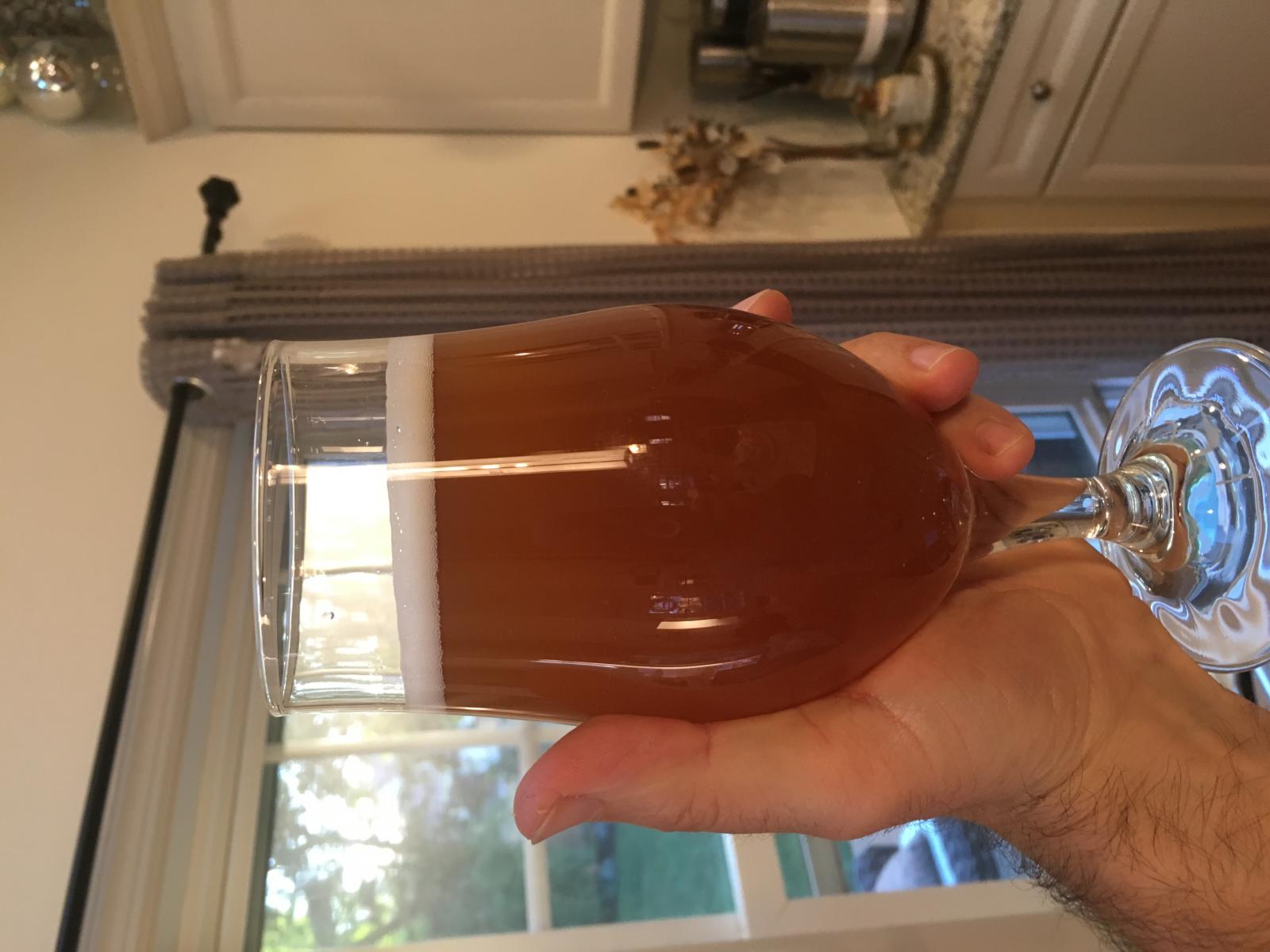When I add honey malt the beer just gets way too dark. Any suggestions @braufessor? I'm obsessed with the lighter color beer that looks like orange juice.
52% Pale 2-Row - US
15% White Wheat - US
14% Flaked Oats - US
6% Carapils - Dextrine Malt - US
1% Honey Malt - CA
10 min boil additions for higher gravity:
6% Dry Malt Extract - ExtraLight
6% Corn Sugar (Dextrose) - US
Using 1318 and a fully temp controlled fermentation. Mashed at 154.
Primo water treated to about 160ppm chloride and 90 sulfate. Shooting for mash PH of 5.4
Doing first dry hop at peak ferm. Second after closed transfer to filtered dry hopping keg.
Should I remove the DME and the corn sugar at the ten min mark? Have a feeling the DME isn't helping with the color I'm after due to potential malliard reaction.
52% Pale 2-Row - US
15% White Wheat - US
14% Flaked Oats - US
6% Carapils - Dextrine Malt - US
1% Honey Malt - CA
10 min boil additions for higher gravity:
6% Dry Malt Extract - ExtraLight
6% Corn Sugar (Dextrose) - US
Using 1318 and a fully temp controlled fermentation. Mashed at 154.
Primo water treated to about 160ppm chloride and 90 sulfate. Shooting for mash PH of 5.4
Doing first dry hop at peak ferm. Second after closed transfer to filtered dry hopping keg.
Should I remove the DME and the corn sugar at the ten min mark? Have a feeling the DME isn't helping with the color I'm after due to potential malliard reaction.















































![Craft A Brew - Safale BE-256 Yeast - Fermentis - Belgian Ale Dry Yeast - For Belgian & Strong Ales - Ingredients for Home Brewing - Beer Making Supplies - [3 Pack]](https://m.media-amazon.com/images/I/51bcKEwQmWL._SL500_.jpg)











